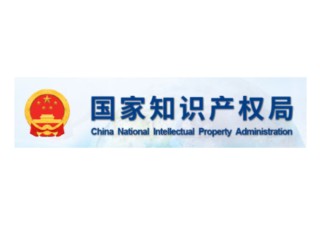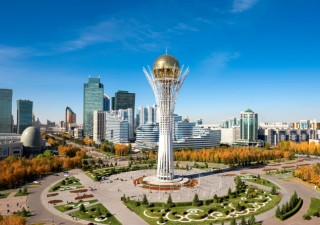Although IP adaption – the act of licensing and adapting copyrighted creative works into different medium including film, animation, TV series and mobile games – harks back to the early millennium in China, recent years have seen an explosion in adaptations as well as the rise of what industry calls in both awe and confusion: the Super IP, copyrights that hit home with their market potential across multiple medium and platforms.
In 2010, hit online novel The Journey of Flower (花千骨) received an Rmb105 million (US$13.5 million) investment from Cicwen Media Group for TV adaptation, making Rmb168 million in sales of initial airing rights and copyright licenses from major Shanghai satellite TV channel Dragon Television and online video platform Aiqiyi; profits from subsequent gaming products are estimated at over Rmb300 million.
“We sold Ghost Blows Out the Light (鬼吹灯) in 2006 for Rmb400,000, and we thought we were so ridiculously lucky we threw an extravagant celebration and blew that money in one night,” said Li Luo, vice president of China Literature, at the Business of IP Asia Forum in December 2017. “This year we sold a title for Rmb40 million – a hundred-fold increase!”
China Literature successfully launched its initial public offering in November, in what the South China Morning Post called “[Hong Kong’s] hottest IPO in nearly a decade.”
Shifting consumer preference, the increased role of analytics and investor demand for “safe and tested” stories are driving up the value of copyrights. A study from the Hong Kong-based research institute Bauhinia reveals that 44 percent of the 2015 nighttime series on Dragon Television were IP adaptations, while IP-adapted film accounted for half of the Chinese movies that topped Rmb100 million in 2016, representing 35 percent of total box office revenue, according to research company EntGroup.
With Baidu, Alibaba and Tencent, together known as the BAT, each joining the race to scoop up the next IP star at source – the most popular source of IP, online literature, provided inspiration for as many as 60 percent of Aiqiyi’s 2015 TV shows – Alibaba Literature, China Literature (Tencent) and Baidu Literature are among the many online platforms that fertilize an increasingly connected entertainment industry. As Tencent CEO Huateng Ma puts it, the future of the “Super IP” lies in the “pan-medium” (“泛娱乐”) exploitation of a virtual world constructed under an intellectual property, linking forms from online literature to gaming, animation, comic books and novels.
The Good, the Bad and the Ugly
Written in a time before the “Super IP” craze emerged, the Copyright Law of the People’s Republic of China and the Implementing Rule of the Copyright Law provide the parameters for the protection and use of copyrighted materials. Original owners of copyright enjoy at least 16 specifically-listed rights, the first four of which – rights of publication, authorship, revision and integrity – are “moral rights,” which are also protected under the Berne Convention for the Protection of Literary and Artistic Works (1886), and are rights that can neither be waived nor assigned to parties other than the creator.
Pertaining to adaptations, copyright owners are entitled to authorize others to revise a work in the same or other forms. Article 12 of the Copyright Law states that the copyright is enjoyed by the adapter, translator, annotator or arranger where a work is created by adaptation, translation, annotation or arrangement of a preexisting work, “provided that the exercise of such copyright does not prejudice the copyright in the preexisting work.”
Moreover, the Anti-Unfair Competition Law of the People’s Republic of China protects famous or noted commodities against usage of names, packaging and decoration that may confuse consumers, with the latest November 2017 draft amendment highlighting pen names, translation names and stage names in the provision for “names.” Any unattributed or misattributed usage of copyrighted materials may therefore not only infringe upon copyright and moral rights but also upon anti-unfair competition laws.
But the explosion of copyright exploitation has created unforeseen complexities upon the existing legislation. In a basic scenario, for example, an online writer may authorize right of revision to his/her story to a film production company. The production house, having added new and unique forms of representation to the original story, enjoys copyright protection to the adapted work, including moral rights and other transferrable rights to extract value from a third party or beyond. The online writer, on the other hand, retains his moral rights and is entitled to remuneration and other benefits based on the licensing contract that bound the initial copyright use. By extension, any subsequent licensing or adaptation based on the adapted work should seek consent from and is under obligation to pay remuneration to the original author too.
Here is where IP management becomes chaotic and confusing: the original author may license his right to revision to various parties operating in different forms of media, not to mention potentially non-exclusively for the same form of media (e.g. audiovisual); these adaptors also license their adaptations’ copyrights to more parties, often without consent from or remuneration to the original author.
The rights to reproduce and revise have also become increasingly fragmented and complex as the forms of media proliferate yet become more interconnected. It comes as no surprise that with stunning growth, the Chinese entertainment industry has seen a mushrooming series of infringement suits, with the case of mobile game National Martial (全民武侠) often cited as the first major pan-entertainment infringement case.
In 2015, Beijing-based mobile game company ChangYou sued game developer Qiyoo for infringing its exclusive right to adopt the celebrated author Jin Yong’s 11 novels for mobile games. The Beijing Intellectual Property Court ruled that Qiyoo’s game National Martial had made extensive use of the martial arts techniques, weaponry, characterization and plotlines in Jin Yong’s novels, and ordered the infringer to pay ChangYou Rmb1.5 million (US$240,000) in reparations.
Short-sighted exploitation of a copyrighted material’s plot and characters, sometimes even retaining as little original element as a title or name, has spurred many one-time spin-offs that are irrelevant and even contradictory between different licensing parties, creating audience confusion as well as harming the commercial value of the copyright. Today, some of the biggest names in IP adaptations like Ghost Blows Out the Light, Princess Weiyoung (锦绣未央) and Eternal Love (三生三世十里桃花) may be as well-known for their captivating plots as their high-profile legal disputes.
In a view shared by many practitioners with Asia IP, Hunter Wang, a partner at Lawjay Partners in Beijing, points out that “despite making big strides, copyright licensing is just beginning to experience setbacks: major litigation in the copyright disputes occurs frequently; multiple licenses, false licenses and dishonesty are abundant due to poorly defined rights; and copyright collective management organizations have poor efficiency and limited incentive due to low allowable income.”
Close Encounters of the Pan-Entertainment Kind
With so much at stake, some have ventured to tackle the current challenges. For example, Tencent has been experimenting with a new model since it announced the formation of a management unit for the title The Brave Adventure (勇者大冒险) in 2015. In what it calls “multi-dimensional, cooperative exploitation of a worldview based on a star IP,” the unit comprises of Tencent Games, Tencent Animation and Pixel Soft, and is headed by “IP construct lead” and original author of the penname Nanpai Sanshu (南派三叔).
This “IP cooperation partnership” (“IP共营合伙人制”) model was more fully iterated in 2016 by China Literature, which runs the online literature platform formed by the merger between Tencent Literature and Shanda Literature to provide IP reserve for Tencent’s animation, TV and film, and gaming subsidiaries. “China Literature put forward the model to bring in all the related parties in a star IP from the beginning, setting up a dedicated entity to manage and develop the IP works and derivatives in a multi-line fashion. All the authors and content parties will have a say in the derivative works and a cut of the final proceeds under such arrangement,” says Minjian You, founding partner of Shanghai Co-effort Law Firm. Co-Effort is the legal counsel for Tencent and China Literature, and speaks with firsthand knowledge of the workings of the partnership model.
“We believe this is a welcome development for both industry and IP practitioners,” says You. “First of all, it will end the rough and abusive IP exploitation commonly seen in traditional IP authorizations and avoid many licensing disputes. Secondly, it brings in the crucial upstream and downstream partners into the IP authorization process. On the one hand, content providers have some control over the adaptation of downstream products to ensure consistency and quality. On the other hand, downstream film, television and gaming companies can gain earlier exposure in the upstream production to leverage user data to plan content and marketing efforts.”
“And from the perspective of intellectual property lawyers, the development and utilization of the same IP through different forms of work can lengthen the IP protection cycle and maximize the value of IP. This model also poses new requirements for intellectual property legal services, necessitating practitioners to intervene in IP authorization at the on-set to define the rights and obligations of all parties, specify the way to authorize usage, and clarify the rights of all kinds of IP-derived works,” You adds.
In fact, this arrangement is not unlike the production/ management units common in Japan, which were first introduced to the anime sector by Toshimichi Otsuki, producer of the hit series EVA. In face of a cash-strapped animation industry with reluctant investors in the early 1990s, Otsuki formed a production committee for EVA by pooling together different production units from the animation and sound studios to TV stations and toy companies to front the cost of production. In return, each party received an agreed-upon share of future profits, and owned the copyright to EVA collectively through the committee as a legal entity. EVA has since become one of the most iconic stories and brands in Asia, spurring many spin-offs, re-makes and auxiliary products.
“[The proposed IP partnership management] is expected to change the one-off, loose and short-term licensing relationship between novel writers and multi-media developers. Under such arrangement, the exploitations on Super IP may last for many years and extend to various areas, like the example of the Marvel Series,” envisions Wei He, a partner at King & Wood Mallesons in Beijing.
Although production committees have now become the norm for animation production in Japan and receive praise for their consistent style from professional member companies, the arrangement is also responsible for creating a cumbersome licensing process, with many attributing hardships in even obtaining airing rights outside of Japan to the collective ownership of the committee. “In order to balance and maximize the benefits of all parties, any decisions about the exploitation of the IP must be decided by all parties, which may make it difficult for the partnership to make prompt commercial decisions according to the market environment,” explains Charles Feng, a partner at East & Concord Partners in Beijing.
Such is the challenge Tencent was eager to tackle given the shortening timespan during which any particular IP might capture an audience’s attention. When The Brave Adventure’s mobile game came out in March 2015, it was quickly followed by animation, print novels and comic books to weigh in on the “panentertainment” strategy. Instead of cost-covering in mission, Tencent’s IP committee model has become the posterchild for exploiting IP in the most efficient and comprehensive manner.
“This method controls copyright through large companies. It allows for more clear-cut rights and interests from the on-set of content creation, and increases the efficiency of the copyright licensing in a blanket manner,” says Na Zhang, an associate at Lawjay Partners and assistant professor at the Capital University of Economics and Business in Beijing.
Both Wang and Zhang also point out that the model doesn’t fundamentally solve malpractice and chaos in original-to-adaption licensing, and lacks in promoting the transfer of copyrights after initial partnership creation.
“In fact, it may even result in the monopoly of high-quality copyrights among several big players and alliances, undermining competition and hindering innovation as content may tend to become monopolistic and lacking in diversity,” adds Zhang.
“Ultimately, it is still too early for us to assess the impact of IP partnership management to the current practice,” He cautions. “Firstly, it stays on the proposal level. There is no other successful case mentioned according to the published information. Secondly, due to the high bar of the alliance, a very limited number of novels would be selected and be exploited under such partnership management plan. Thirdly, China Literature as the online platform appears to take the lead in negotiating the licensing arrangement in the plan. Whether it would get sufficient support from writers and other developers remains to be observed.”
License to Use (not Kill)
Industry is not the only party experimenting with new practices and models: with copyright cases accounting for 75 percent of the 521,800 first instance IP cases Chinese courts accepted between 2010 and 2016, it should be no surprise that the current Copyright Law has come under pressure for change and is now into its third draft amendment since July 2011.
Yuan Li, a senior associate at Co-effort, highlights the potential refinements in the interpretation of “fair use” exceptions. In the current amendment draft of the Copyright Law, the previous “three-step test” language borrowed from the Berne Convention has been replaced with statutory clauses stipulating conditions that constitute fair use.
“On the other hand, the United States copyright law adopts the ‘four elements test,’ and draws from a wealth of cases and past experience” to supplement its statutory guidance, says Li. She points out that Article 8 of the Opinions on Exerting the Function of Intellectual Property Rights Judgment to Facilitate Socialist Cultural Development and Prosperity and Promote Independent and Coordinated Economic Development states that copyright use for the purpose of promoting technological and commercial development that doesn’t conflict with the normal use of the work nor unreasonably prejudice the author’s legitimate interests could be considered as fair use. Following this rationale, Li is keen to see the updated Copyright Law stipulate more guiding principles that are formulated with the current trend of “pan-entertainment” in mind.
Another development watched with anticipation is the role of the Collective Management Association of Copyright (CMAC). “CMAC may play a more important role in copyright licensing and adaptation [in the next amendment],” says Feng. “According to the provisions of the new draft of PRC Copyright Law, the CMAC may exercise the copyright even without the authorization of the owners, which makes it possible to adapt the IPs that are difficult to locate the appropriate the right owners.”
Any other updates to watch for? The parameter and consequences of infringement are expected to see more clarification, according to He. “We think statutory damage is one area that needs to be discussed. In the Patent Law and Trademark Law, the amount of statutory damage has been raised to Rmb3 million (USD$385,000). However, the current draft of the Copyright Law still limits the statutory damage to Rmb1 million,” He points out.
Edge of Tomorrow’s Copyright
If a holistic licensing strategy and comprehensive copyright regime provide the basis for a healthy IP environment, technology provides the tools for effective transaction and protection.
Rex Ma, co-founder and managing director of Hong Kong-based digital media solutions company iGen6, suggests three key basis of digital rights management (DRM) solutions that seek to control the use, modification, and distribution of copyrighted works:
Digital signing of copyrighted materials. Cloud-based software can help content producers sign off on their design work, for example from the output of copyrighted software like CAD design files.
Protection of design work. Private keys and time stamps can be generated during the signing off action, which can act additionally as a “notary” service that verifies the identities of the submitter of digital content. This forms a full audit trail that serves as evidence of copyright ownership.
Confidential delivery of copyrighted materials to the designated recipients. After the signing off of the digital work for the proof of ownership, the designer can retrieve the “public key” of the digital certificate of the intended recipient and use it to encrypt the design file for delivery. When this encrypted design file is received by the recipient, he must use his own “private key” to match the “public key” in order to decrypt the file. This effectively limits file access to authorized persons only.
And increasingly, DRM will make use of blockchain technology. The underlying workings of blockchain is a distributed ledger that is highly tamper-proof as transactions are stored in a decentralized and encrypted manner where each addition to the ledger must be confirmed by all other parties.
Blockchain-based IP solutions can be used for three key purposes:
As a safe deposit of digitized content that reduces risk of loss, piracy or unauthorized revision. Because each record on the blockchain is traceable and time-stamped, the storage of creative works on the ledger also functions as a proof of ownership to the copyright as enjoyed by the original author upon creation of the work.
As an exchange for an IP asset that enables both peer-topeer, self-executing smart contracts and more complex and multi-layered copyright assignment.
As a settlement platform by enabling payment for IP assets in digital currency, enabling transferal, deposit, withdrawal and storage of financial value in digital currency.
“The special features of blockchainbacked decentralized ledger technology are its immutability, security and transparency. I believe a blockchainbacked IP-related platform can provide an objective depositary service particularly in time-stamping different editions and layers of copyright works; documenting their first, joint or collective authors; and streamlining the authenticity of copyright authorship/ownership issues,” says Peter Cheung, a barrister, arbitrator and former director of intellectual property at the Hong Kong Intellectual Property Department.
An avid song and video producer in his spare time, Cheung advises IP owners and stakeholders to establish blockchainbacked platforms for IP licensing and adaptation via smart contracts. “In the digital age, it is inevitable that technology and law would have to converge at some points and I believe blockchain-backed copyright licensing would be a breakthrough to solve the systemic economic, social and cultural problem,” he says.
An Entertainer’s Basic Instinct
A stringent copyright regime, new IP business models and cutting-edge technology are all good to have, yet they form only the protective and exploitative parameters of the underlying content. One mustn’t forget the fundamentals of cultural production, warns Xiaonan Geng, president of the production company Beijing Sky Saga Film and TV Culture Media, in a stark contrast to the optimistic discussion of adaptation on a BIP Asia panel. “The price of an IP may have risen hundred-fold, but has the pay for script writers and production crew?” she asks.
She is concerned with the quality of some of the IP adaptations, pointing out that not all stories are suitable for different medium, and that industry should adapt in a meaningful manner instead of blindly chasing the myth of Super IP.”
“In the end, we need to invest in culture and original production, but not speculate the way we do as if culture is a piece of real estate. We talk about incubating IP, but is that how you nurture culture? Can you incubate Shakespeare?”
Her question echoes as the clamor dies down, at least momentarily.







